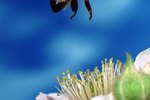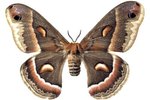Mud daubers are thin metallic blue wasps near your home. Some people refer to mud dauber wasps as blue wasps. This type of wasp prefers hanging around windows and doorways, and rarely bothers people. It is a part of the chalybion californium species. This species hardly builds its own mud nests, but takes residence in abandoned nests constructed by other wasps. Blue mud dauber wasps live throughout North America spanning from Canada and Mexico.
Description
Blue wasps span from 3/4 to 1 inch in length. Besides being blue, the wasp appears iridescent. Additionally, it has shiny small wings and a tiny thin waist situated between the abdomen and thorax.
Habitat
The pipe organ mud daubers and black or yellow mud daubers construct nests made of mud in the corners or overhangs of rooftops. However, blue mud daubers occupy old nests for yellow and black mud daubers. This type of wasp prefers black widows as a food source.
Offspring
Blue mud daubers are solitary species that dwell with their larvae in mud nests, unlike some wasps that live in colonies. The female wasp lays her eggs on hosts or captures prey in the mud nest. The cream-color larvae look similar to maggots and span about 1 inch in length. The larvae grow in cocoons.
Pests Control
The blue wasps are beneficial to the environment because these wasps capture numerous species of spiders, which can pose anxiety in many people. Remove any nests quickly with wasp aerosol spray or scrape the mud nests off the outside of the house. Blue mud daubers are not aggressive wasps. However, when you mishandle them they will go after you.




